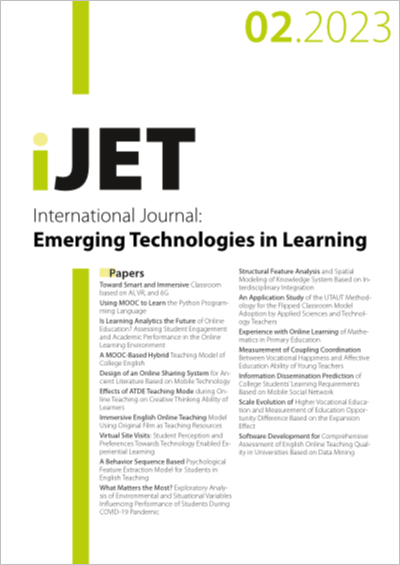Structural Feature Analysis and Spatial Modeling of Knowledge System Based on Interdisciplinary Integration
DOI:
https://doi.org/10.3991/ijet.v18i02.37135Keywords:
interdisciplinary integration, knowledge system, structural feature analysis, spatial correlation analysisAbstract
Figuring out the structural features and internal logic of knowledge system from an interdisciplinary perspective under the action of knowledge flow and revealing the changes in the spatial structure and pattern of the knowledge systems of different disciplines are meaningful works for both the theoretical and practical research on the utilization and expansion of interdisciplinary knowledge. For this reason, this paper built a spatial model for the interdisciplinary knowledge system and analyze its structural features. At first, key features of the interdisciplinary knowledge system were mined, and a knowledge system was built based on the coupling of knowledge and discipline. Then, the relationship between technical knowledge and discipline was discussed, and the complex spatial features of the interdisciplinary knowledge system were mined. After that, this paper built an evolutionary dynamics model for knowledge stickiness, and used it to study the main influencing factors of the knowledge stickiness of interdisciplinary knowledge system based on dynamics and figure out its action mechanisms on the performance of knowledge utilization and expansion. At last, experimental results verified the effectiveness of the constructed model and the proposed algorithm.
Downloads
Published
How to Cite
Issue
Section
License
Copyright (c) 2022 Nan Zhang (Submitter); Xiaoyi Ma

This work is licensed under a Creative Commons Attribution 4.0 International License.


